Keen to see all of Dover’s most recommended attractions while staying in town, I was pleased to discover that the Drop Redoubt perched atop the town’s Western Heights was having a rare open weekend (hosted by the Dover Western Heights Preservation Society) in time for me to attend.
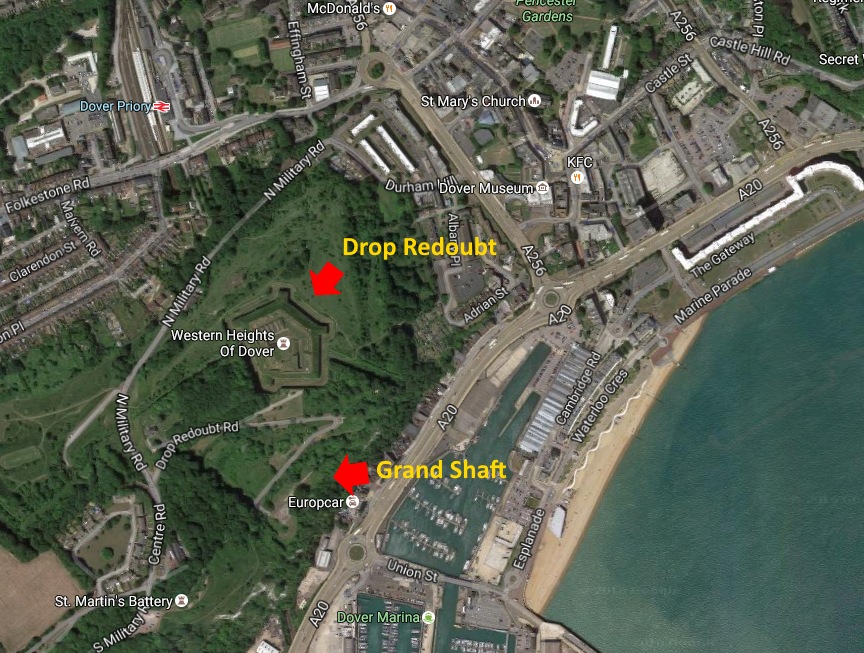
The Drop Redoubt is a bulky fortification dating from the Napoleonic Wars whose squat pentagonal form can be seen from afar as it keeps watch for enemy forces. It faces inland, in readiness for a force attempting to take Dover from behind. I set off for it in bright mid-morning sunshine, making my way up the steep path and through a gate notifying of the presence of cattle to maintain this part of the chalk downs.
A short climb later I found myself in the dry moat of the fortress, sheer stone walls rising on either side of me. I’m already hesitant to think about attacking this place, although I thought that about the formidable defences of Le Quesnoy and it turned out all that was needed to defeat them was a ladder and some Kiwi ingenuity.
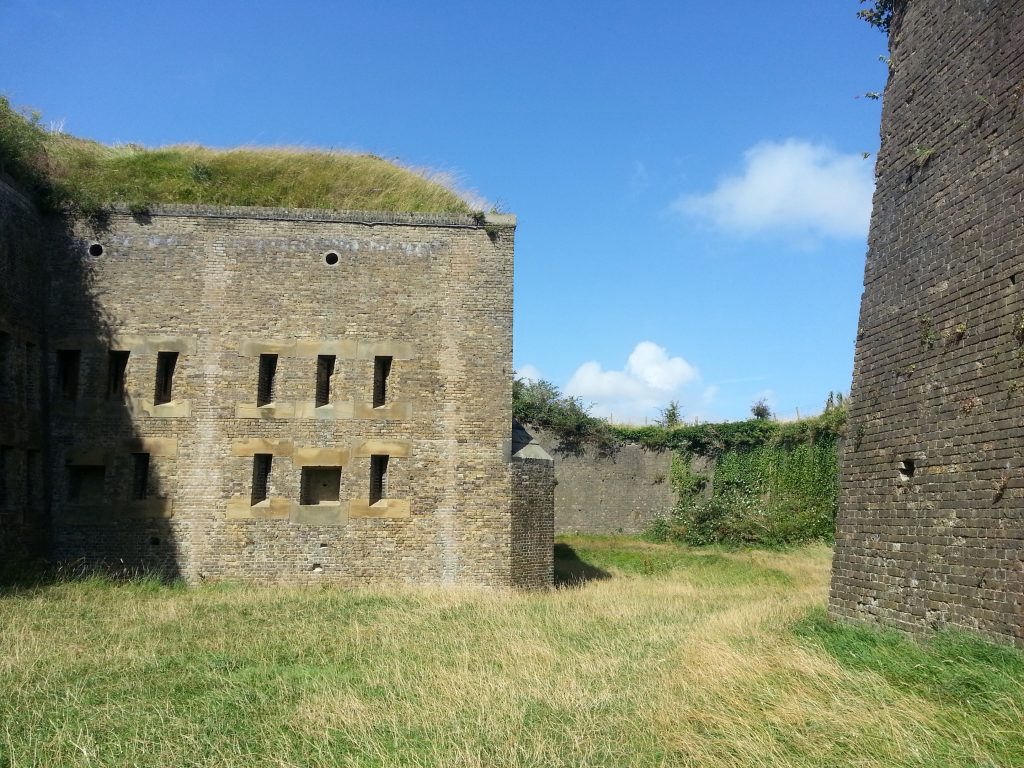
Outside the solid steel door I met some members of the Preservation Society seated beneath a small gazebo. They took my £5 and directed me inside to explore. It was dark, although the brick walls were painted white, and I passed by the local steampunks to find a little cushion fort set up with nerf guns for the visiting children to have their own battle experience.
I managed to retreat without being nerfed and found a long staircase which lead me to the open grassy space in the centre of the citadel. The first thing to draw my attention was the five arched and earth-covered casemates, originally designed to provide bomb-proof lodgings for soldiers but today hosting a café and assorted displays.
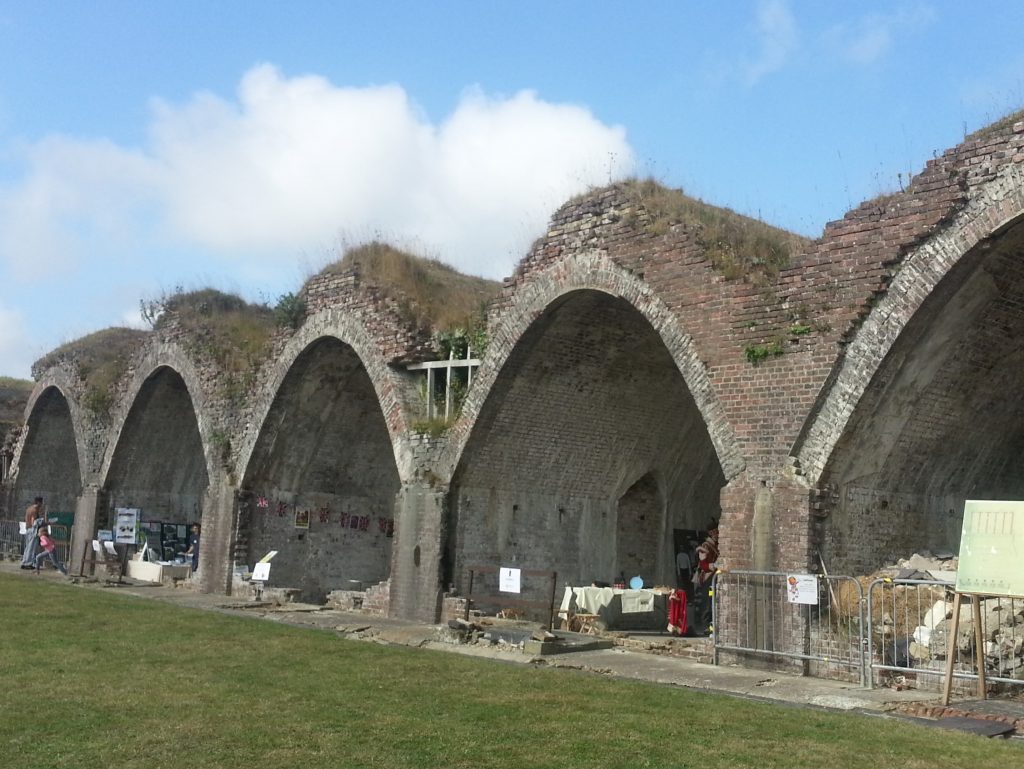
The next thing to catch my eye was the abundance of soldiers in period uniforms, and one person dressed as a tiger. This seemed somewhat out of place at first, until one of the casemate displays informed me that the Drop Redoubt had once housed a real tiger, who was named Plassey and became a local celebrity until a drunken-tiger-keeper incident resulted in poor Plassey being sent away.
I headed up a further set of stairs to make a circuit of the battlements, stumbling across an unassuming lump of rock as I did so. Peering closer I discovered that this is the Bredenstone, all that remains of the western pharos (Roman lighthouse) that once complemented the one on the grounds of Dover Castle. The rest was destroyed during initial construction of the fort, although the foundation can be seen in a room below.

I passed some cannon settings (one with actual cannon!) before I noticed a bit of a ruckus going on below. The redcoats were forming up! I peered over the fence to observe just in time to have a barrage of musket fire directed my way!
Lucky for me, the display was all smoke and noise and no live ammunition. Still it was somewhat frightening to stand in the line of fire as the troops continued to advance. I don’t think my pants would stay clean very long if I ever found myself in the midst of a real musket fight.
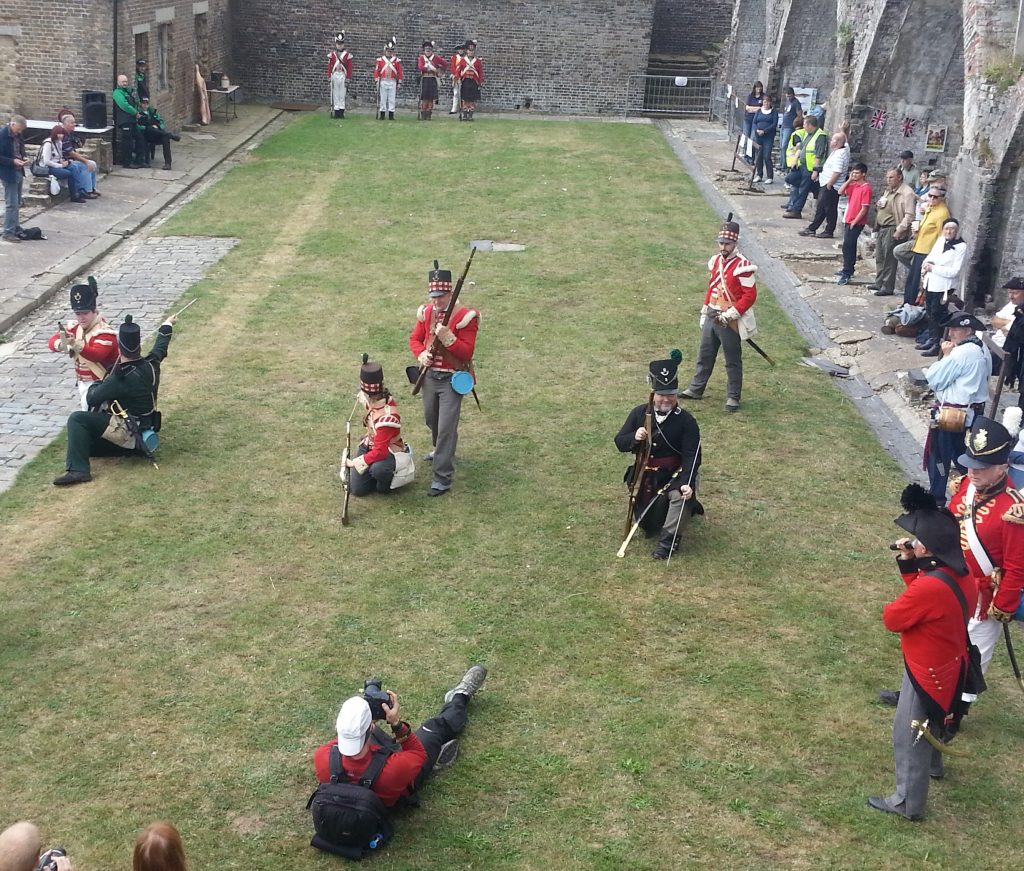
Once the demonstration was over and I’d recovered from the shock of being fired at, I headed back downstairs, and then down a further set of steps to an alley leading to the old entrance to the fort, which was once by way of a bridge over the moat. I’d previously checked out this entrance from the outside on a day when the redoubt wasn’t open and I could only stand across from the lonely door wondering exactly what kind of ladder I’d need to break in.
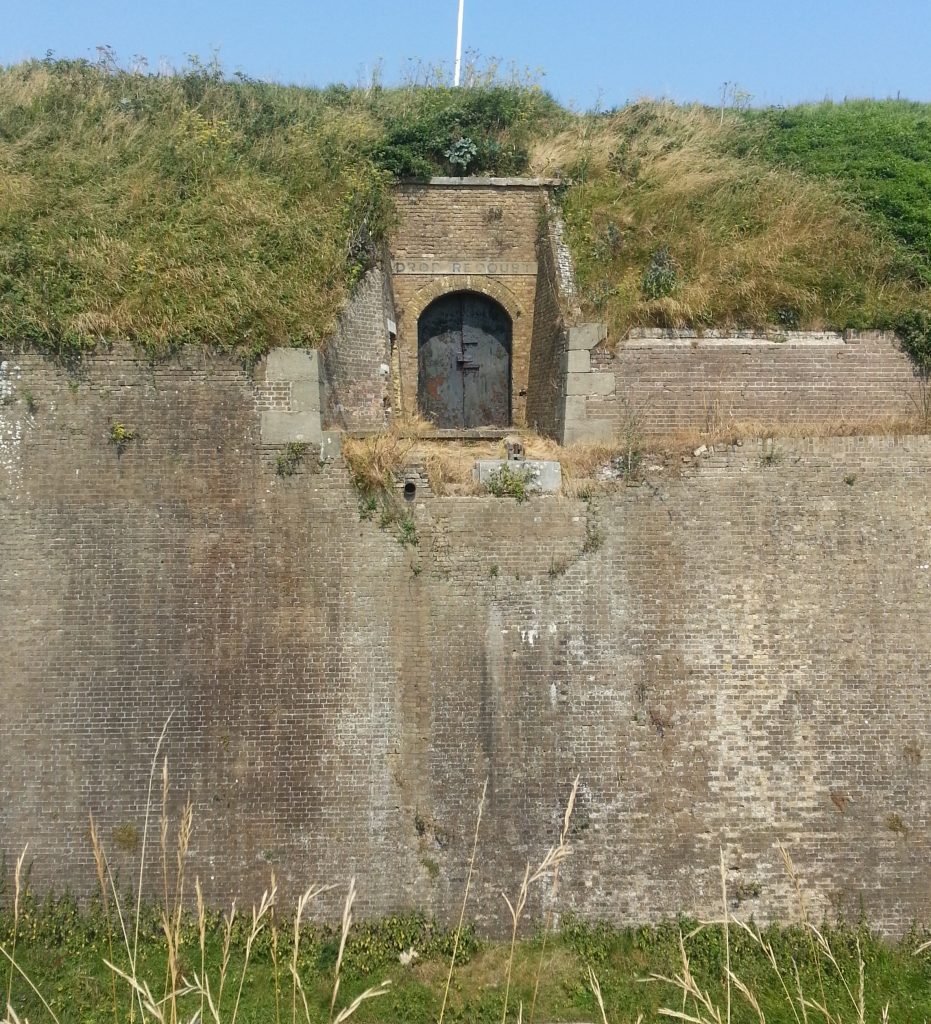
As I faced the entrance from the inside this time, proud to have successfully infiltrated the building, I found to my right a guard room and prison cell.
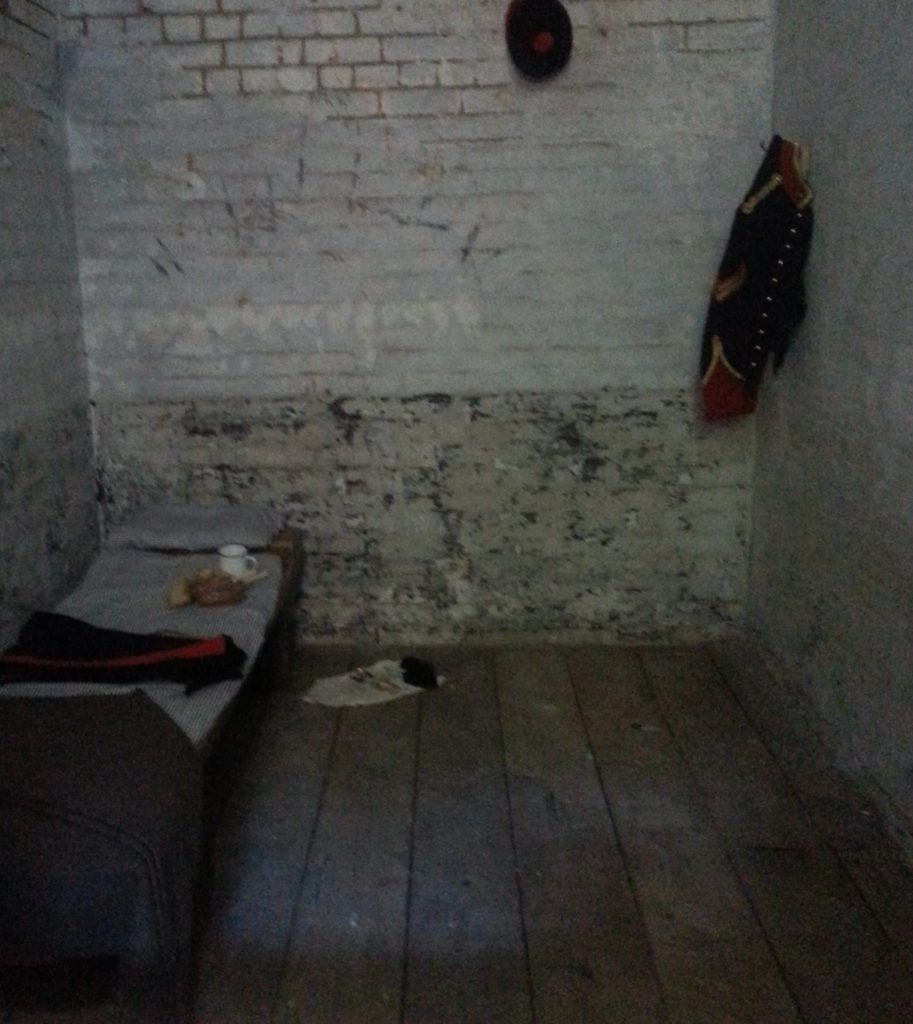
To my left were a row of officers’ quarters, added in the 1860s and featuring the foundation of the old pharos as a layer of flint stones amongst the bricks of one wall. I made my way along the row of rooms and exited by the officers’ latrine.
Heading back up the staircase I found myself entering another earth-covered bunker – the powder magazine. Making my way through the dark narrow passages I found to my terror that I was not alone – these tunnels were the home of a host of black spiders guarding their egg sacks. As best I can tell they were cupboard spiders – a close relative of the black widow which can deliver a painful bite if aroused.
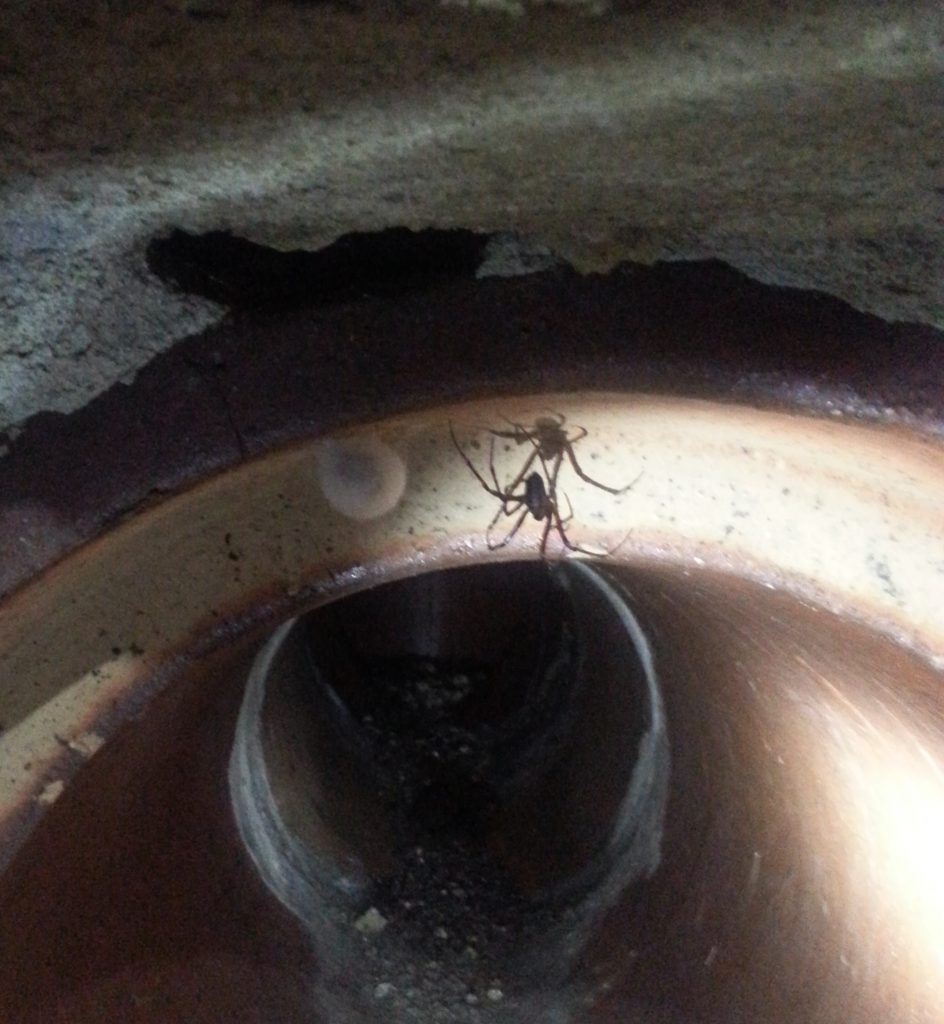
I departed the magazine swiftly, thankful that all the powder had been removed – or I may have felt the need to set the whole thing ablaze out of horror.
Though shaken by the spider gauntlet, I bravely descended down into the caponiers – interior rooms from which muskets or cannons could be fired into the moat to shred invading troops and similar to the one I’d already seen at Dover Castle. Thankfully these dim white-painted rooms with their slitted windows appeared to be spider-free.
I’d now fully explored the redoubt, braving musket fire and alarming arachnids, so it was time to leave the fortress. However there remained another site for me to see while here on the Western Heights. The Grand Shaft – a triple spiral staircase allowing troops to rapidly descend to shore level – was also open today.
So I picked my way across the heights to “the bowl” in which the triple entrance to the shaft is located.
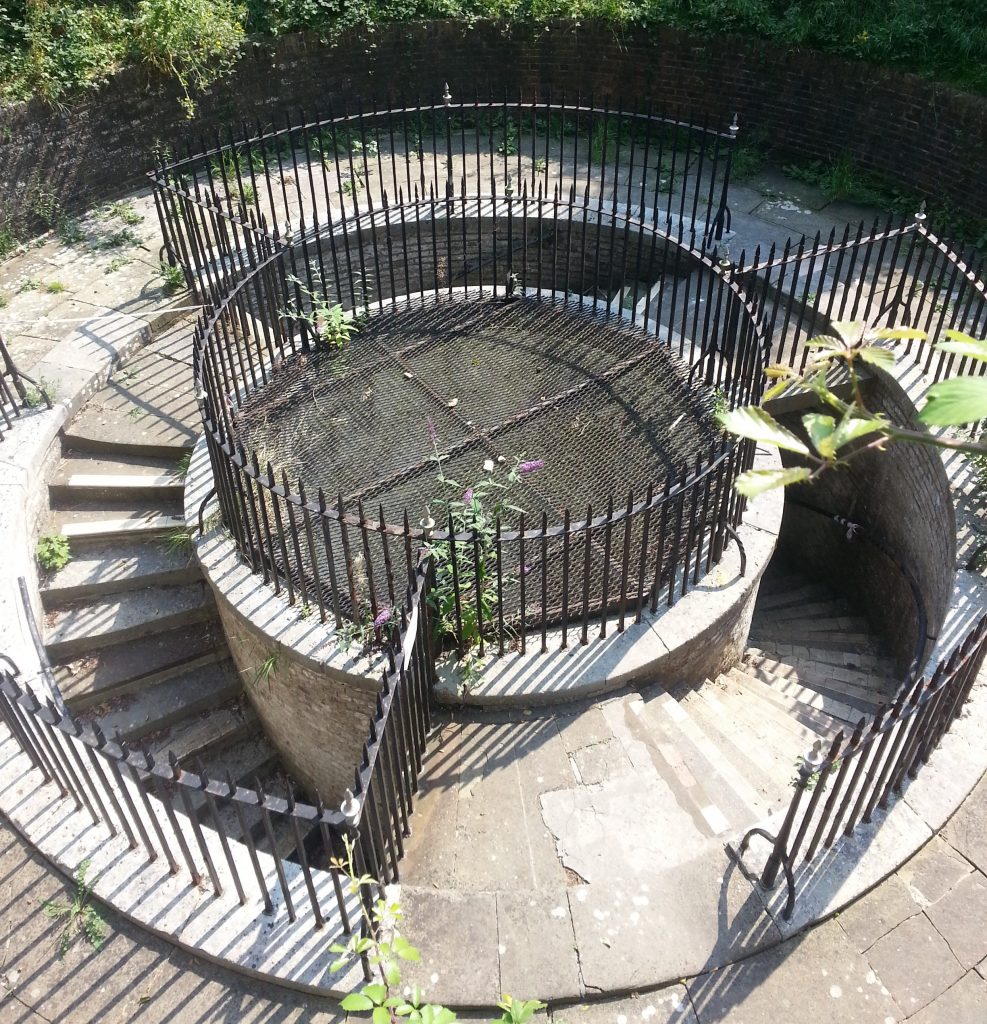
As I began my way down the approximately 43 metre high staircase, which began construction in 1806, I couldn’t help but note what an elegant creation this is despite being built for an entirely practical purpose. Intermittent arched and barred windows opened into the central light well which is open to the sky and the entire structure is composed of white stone.

Since the anticipated Napoleanic invasion never came and so the shaft was never needed to quickly move troops to ground level, the legacy of the shaft has mostly been as a convenient way for soldiers to access the brothels and pubs dockside. In the Victorian era classism reared its ugly head and the three staircases were divided into “Officers and their ladies”, “Sergeants and their wives” and “Soldiers and their women”.
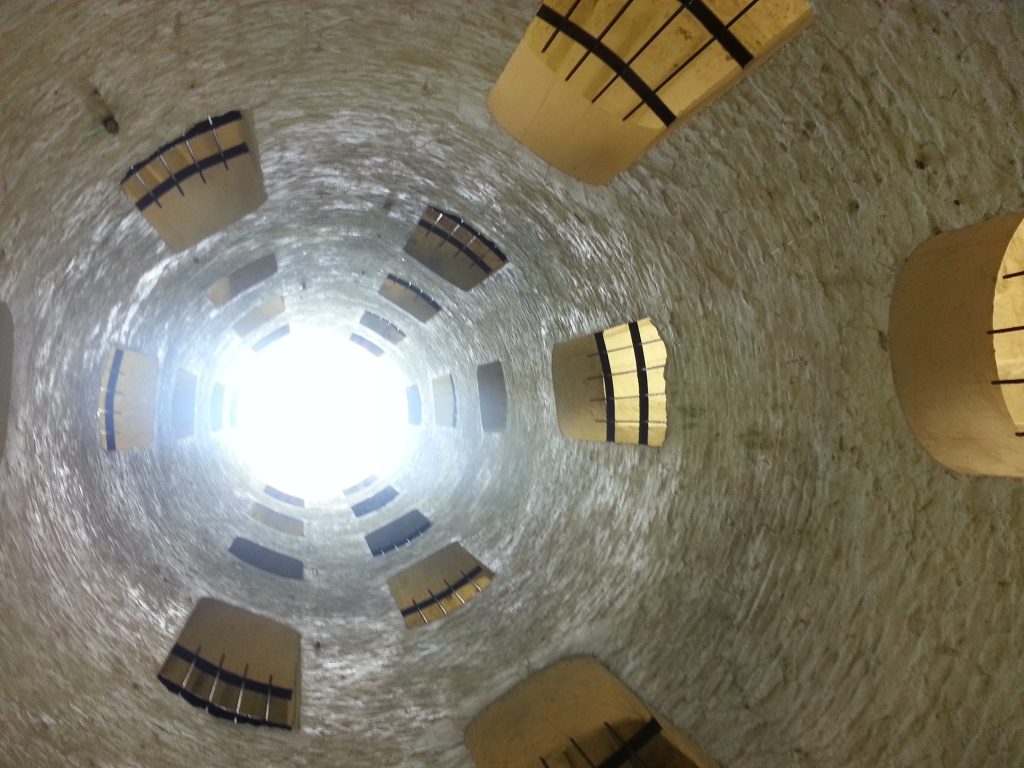
Reaching the bottom I headed through a long tunnel and back out into the sunlight, ready, perhaps, to engage in some debauchery. My only question, should I consider myself a lady, a wife, or a woman?
I’d now ticked off all of Dover’s most famous attractions. If any Dovorians happen to be reading this, can you think of some lesser known places that make your town special?
References:
10 common spiders found in and around Britain’s homes – but are they really all harmless? by Kara O’Neill
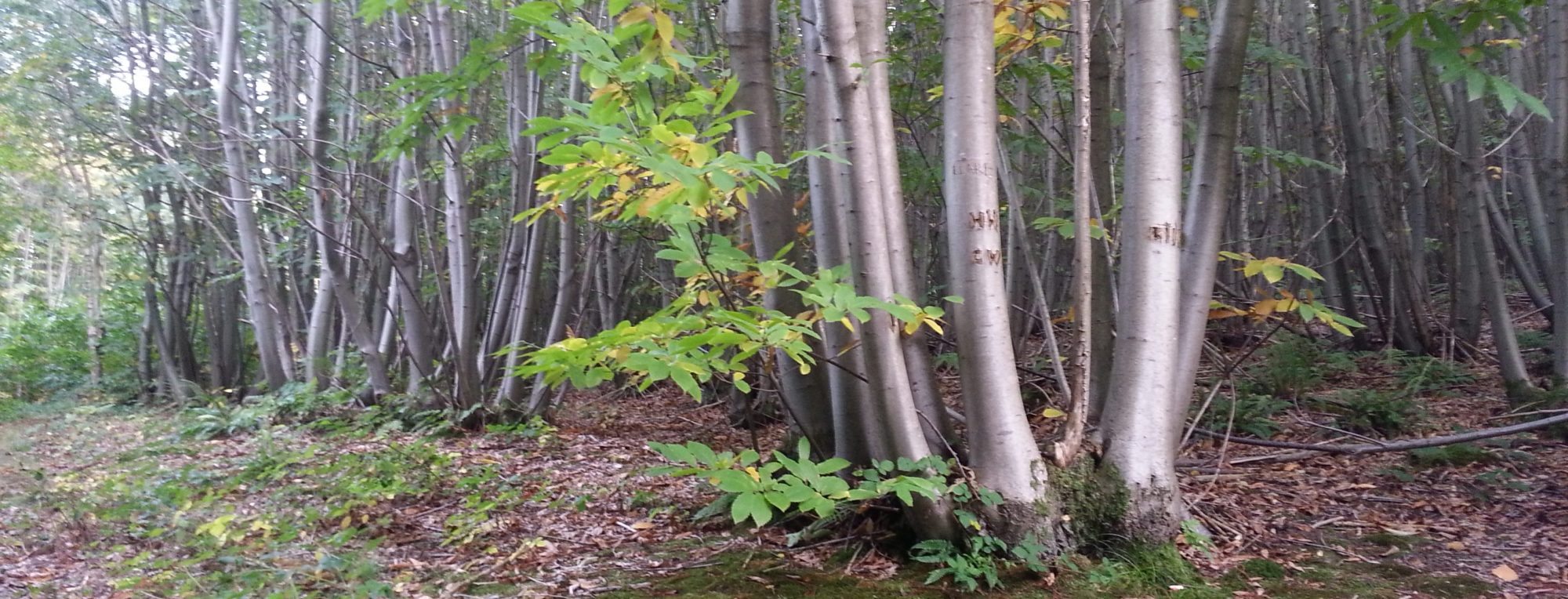



Enjoyed this yarn…Glad the musket fire was all smoke and noise
Top site ,.. amazaing post ! Just keep the work on !